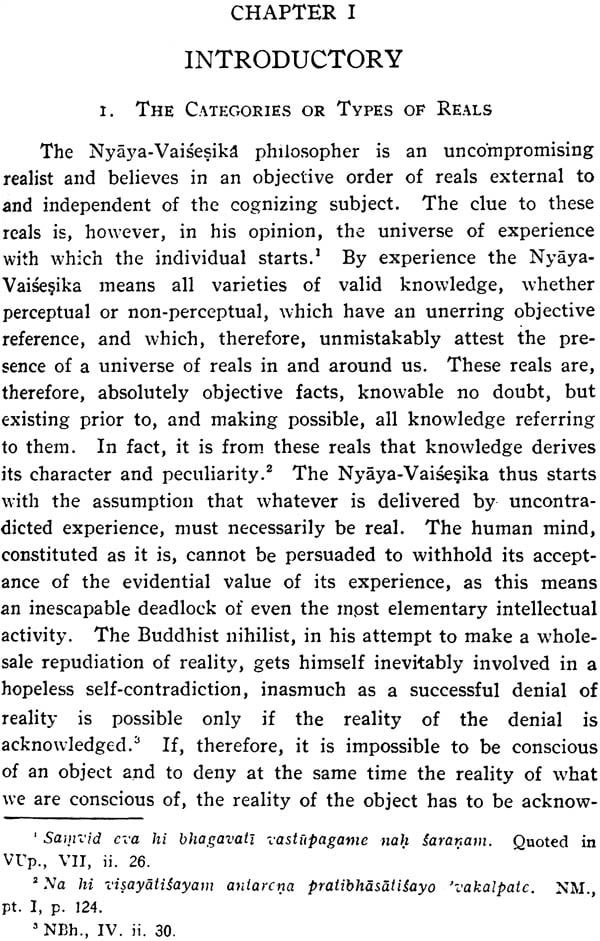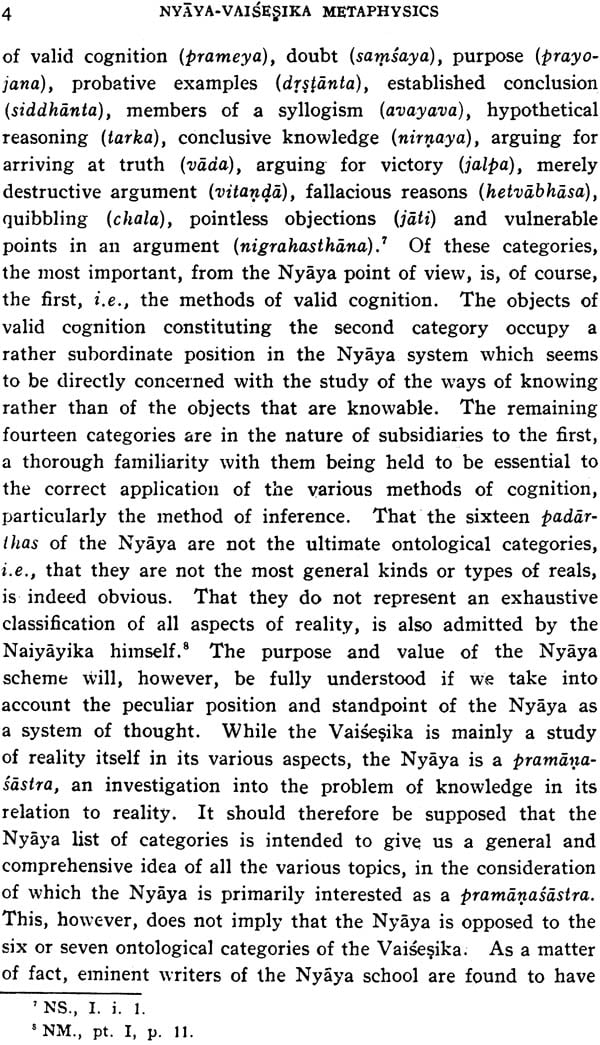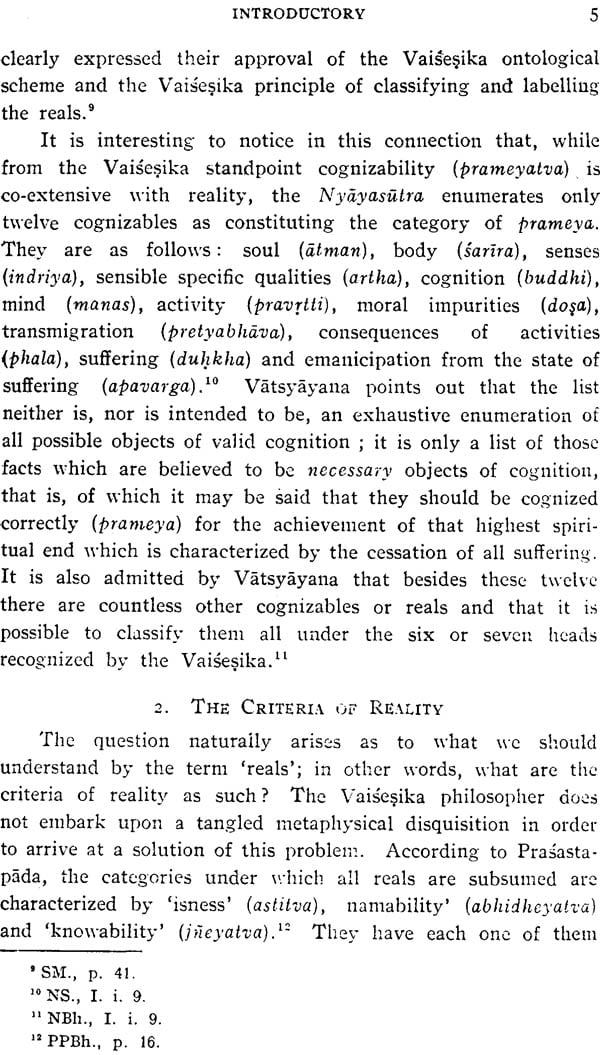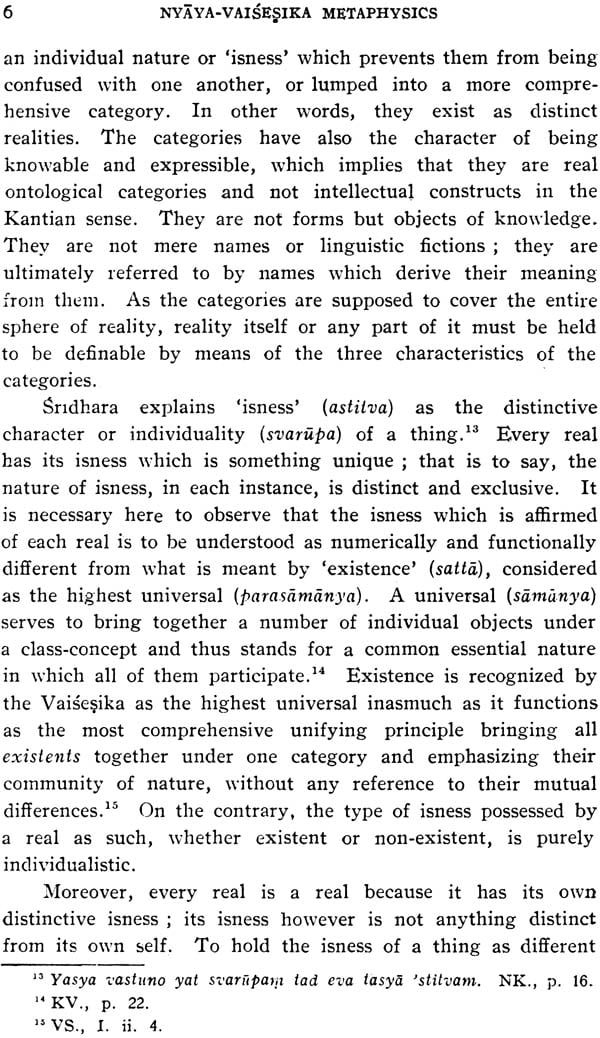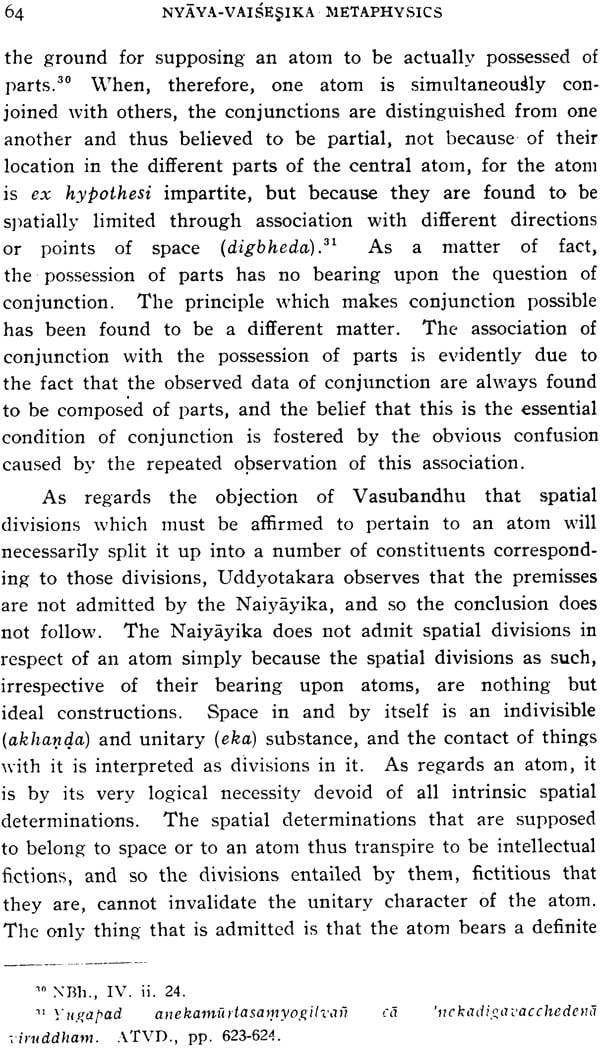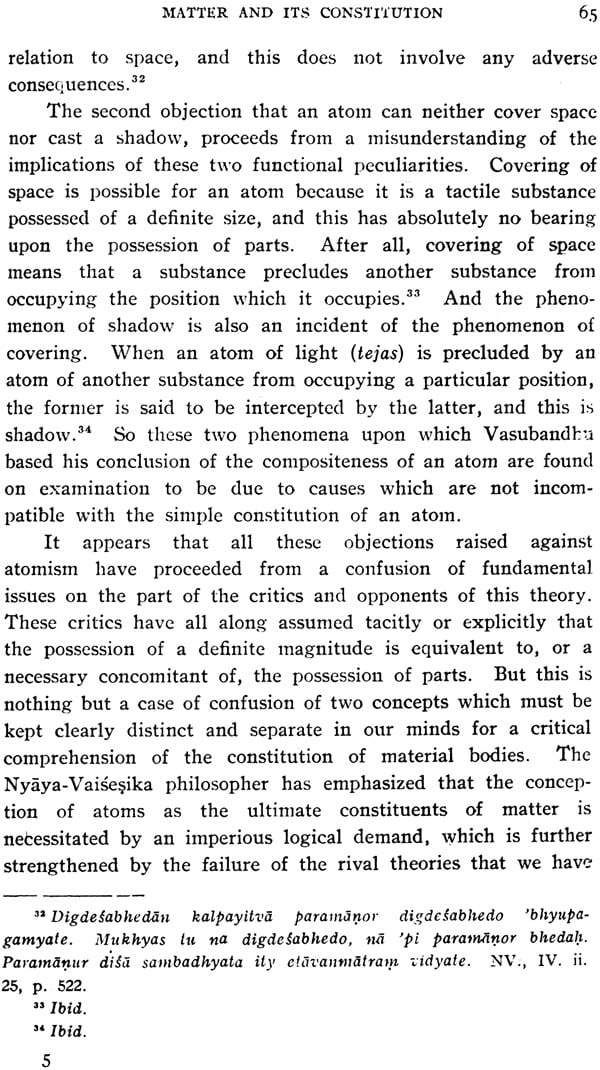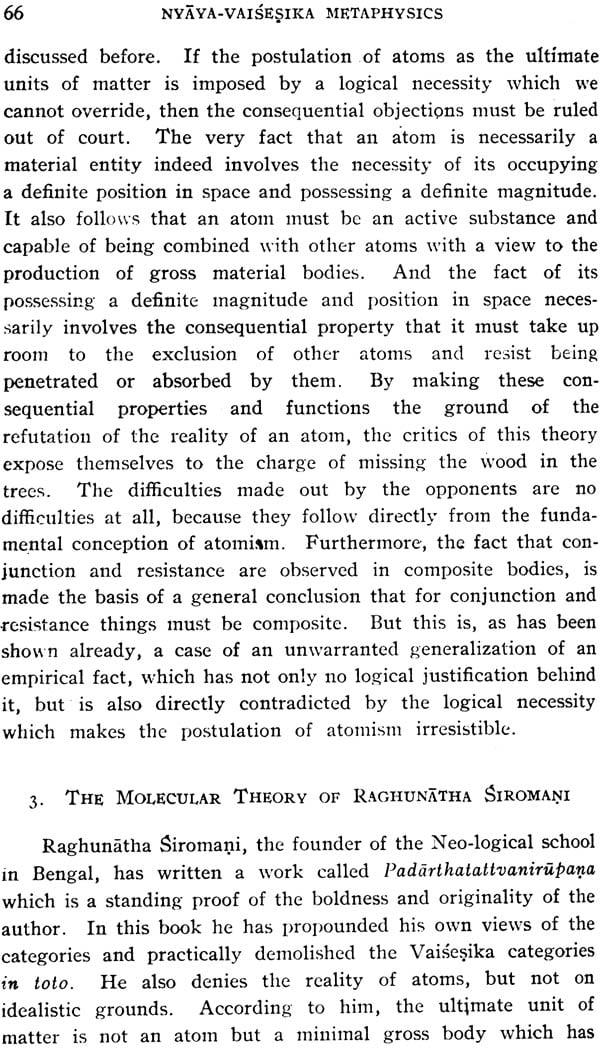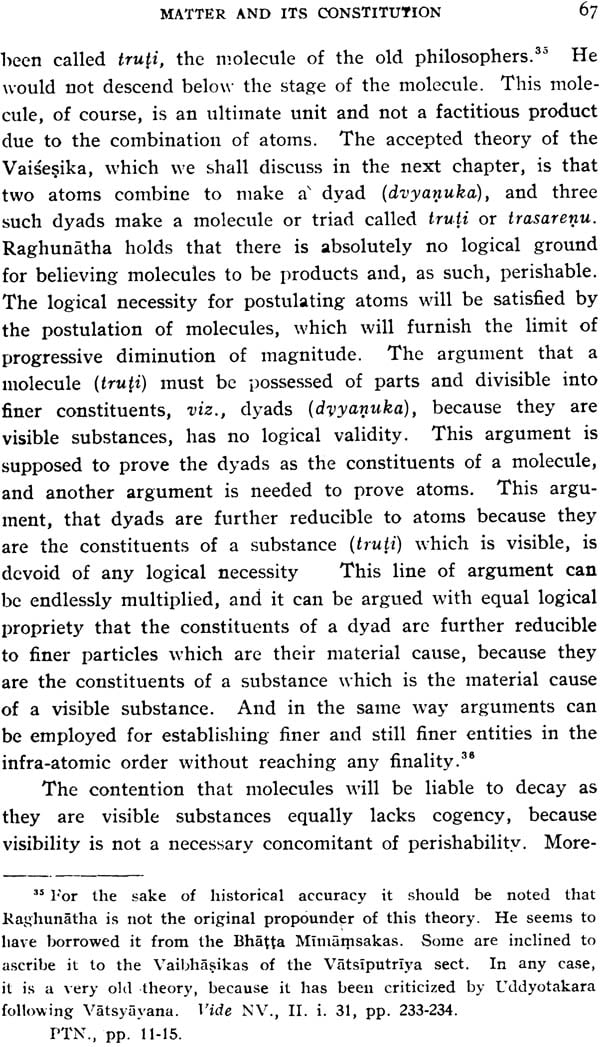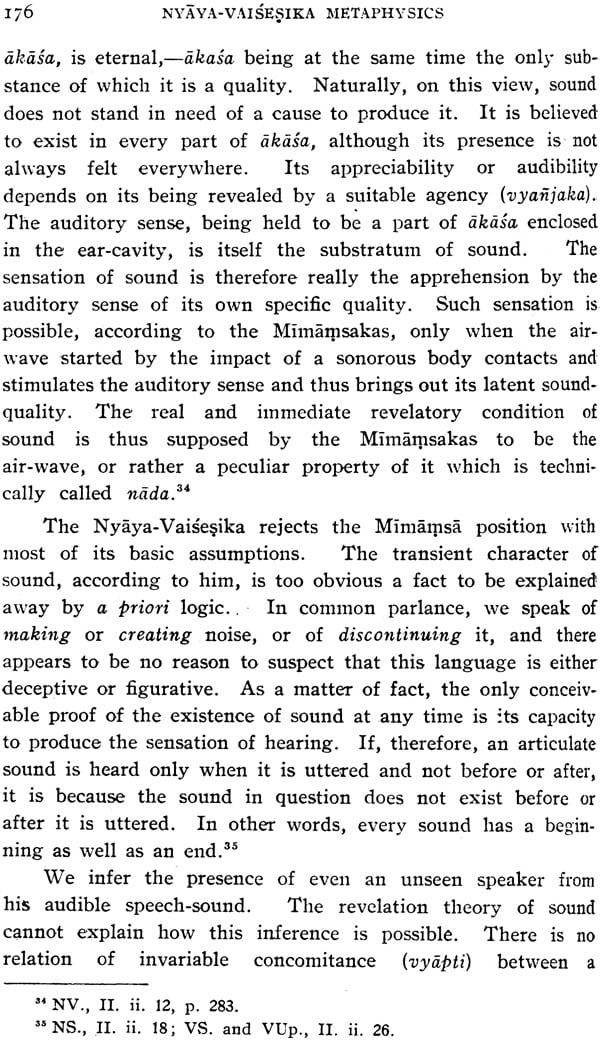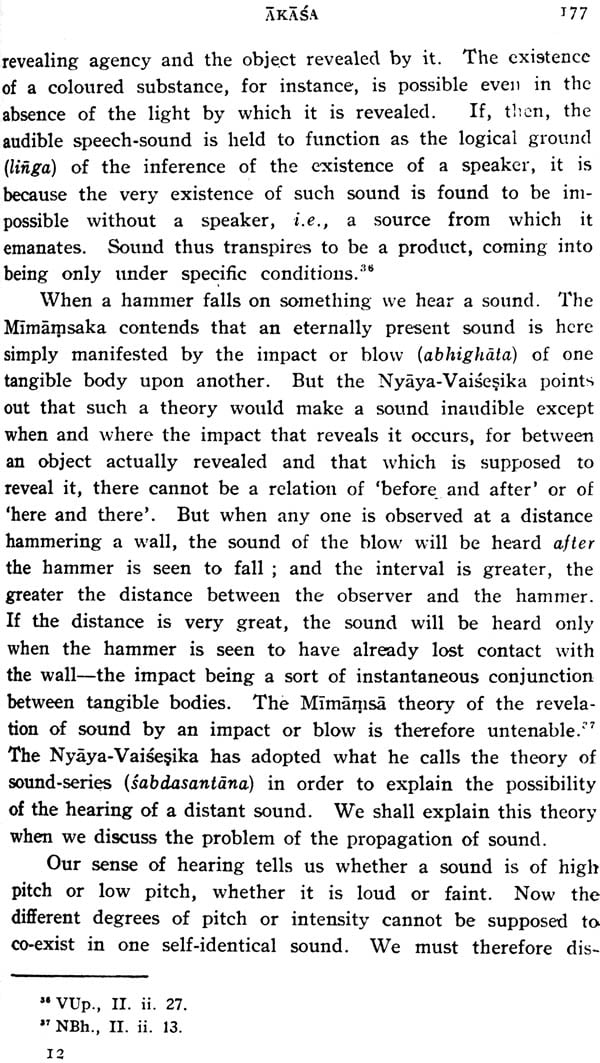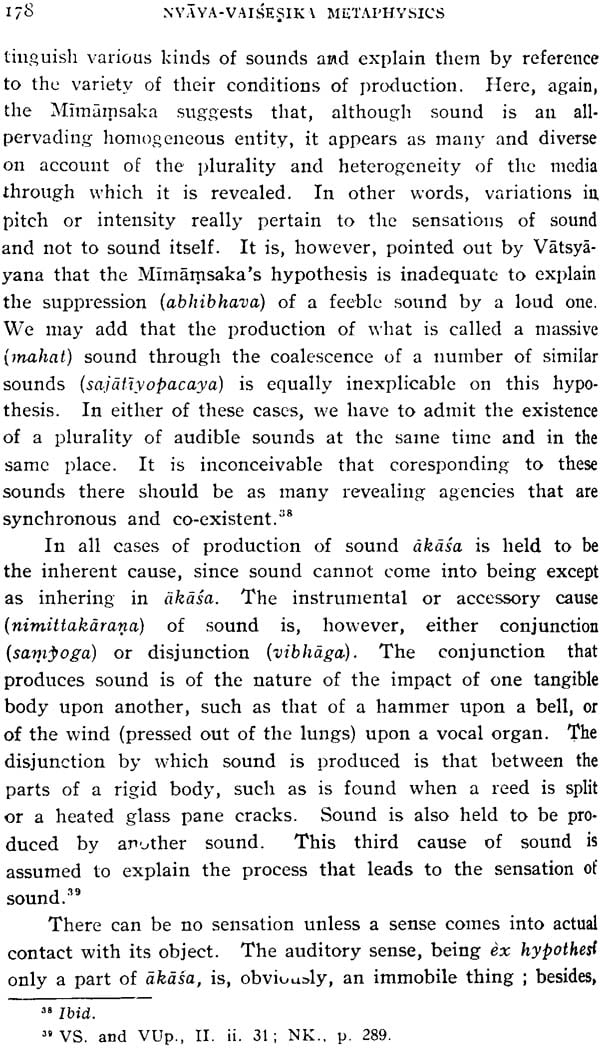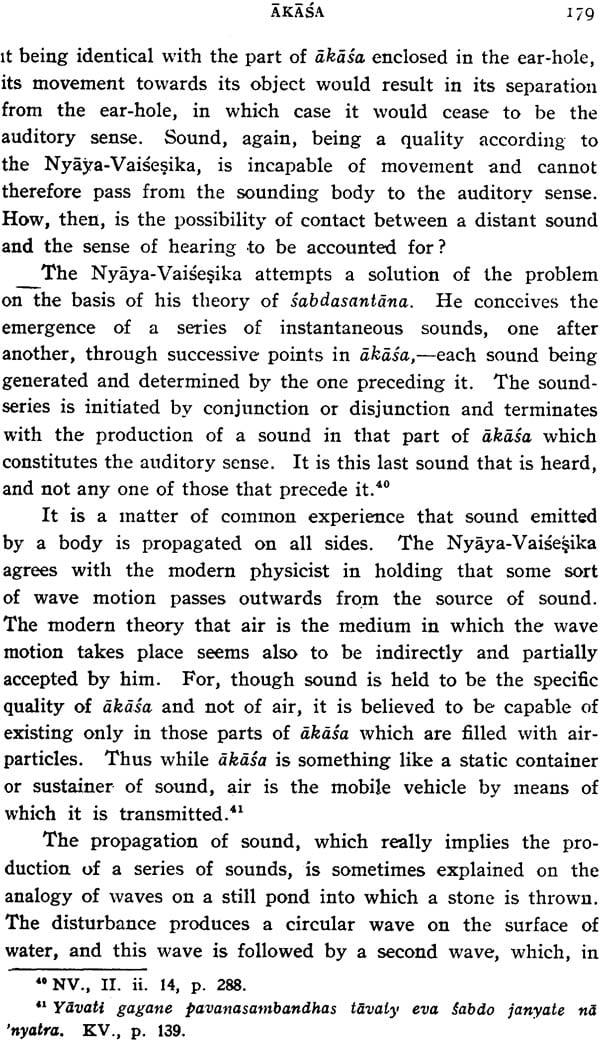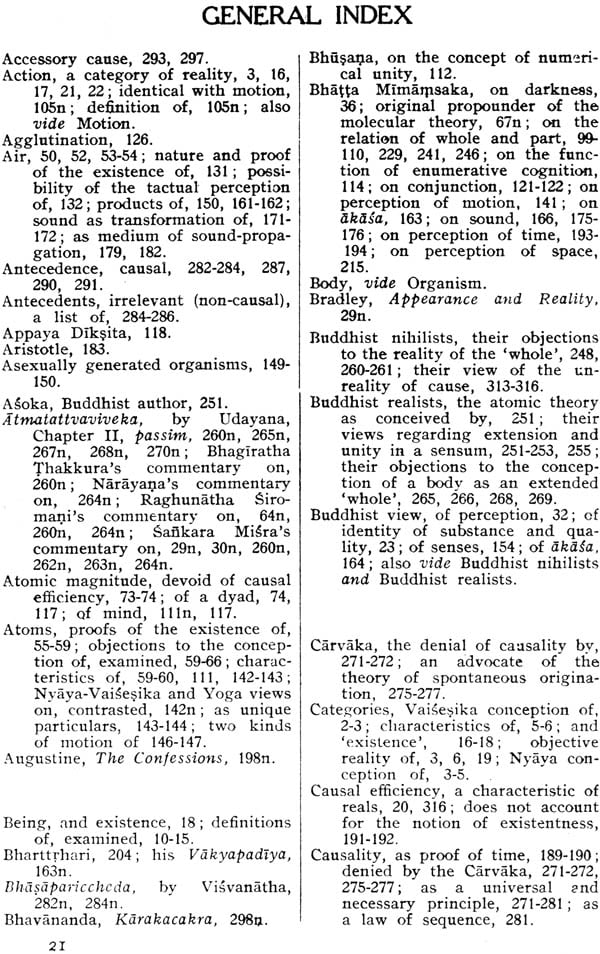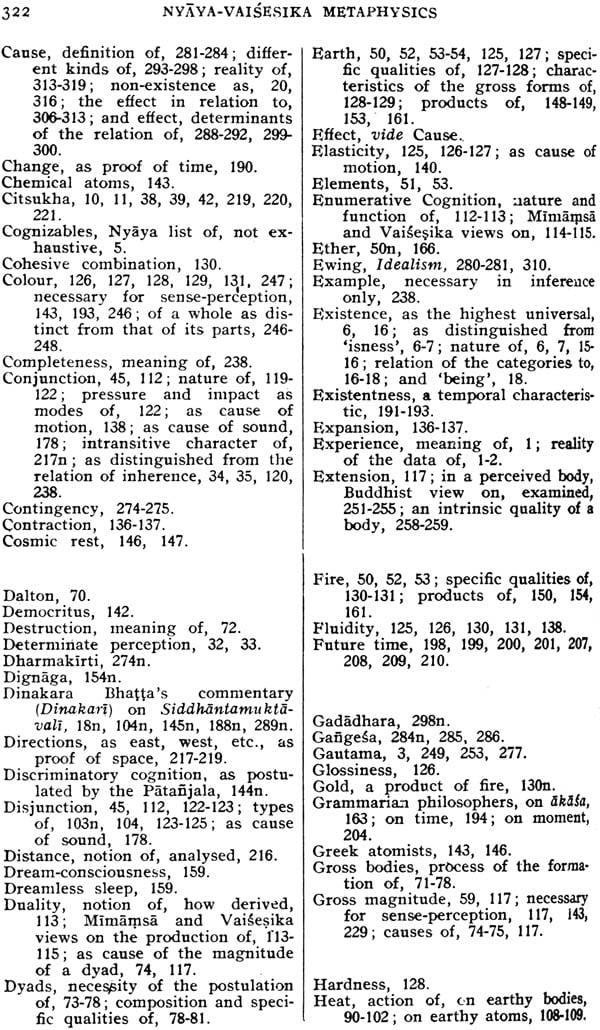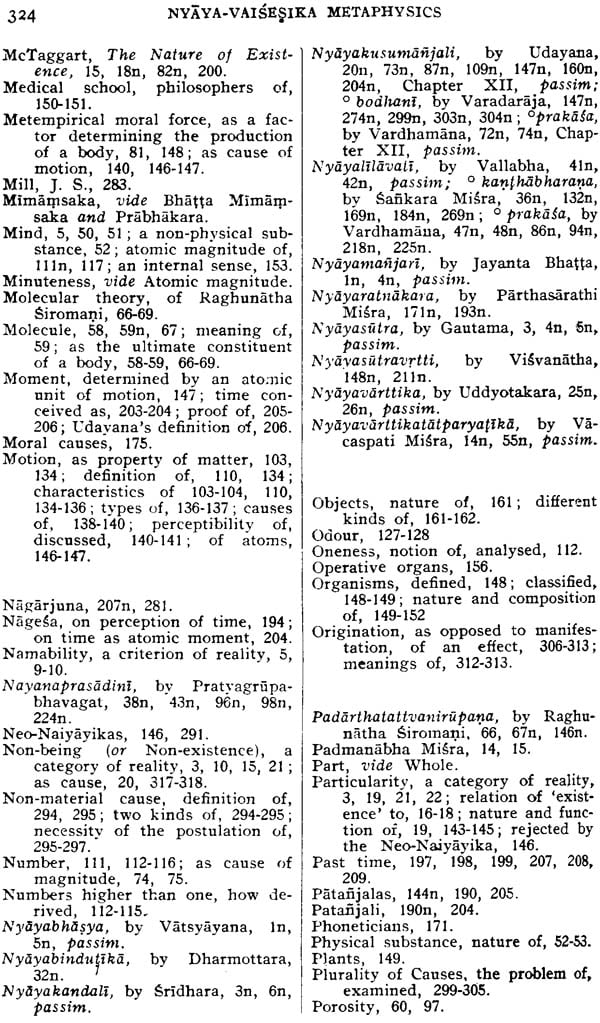
Studies in Nyaya-Vaisesika Metaphysics (A Rare Book)
Book Specification
| Item Code: | NAC026 |
| Author: | sadananda Bhaduri |
| Publisher: | Bhandarkar Oriental Research Institute, Pune |
| Language: | English |
| Edition: | 2021 |
| ISBN: | 9788194124368 |
| Pages: | 347 |
| Cover: | Paperback |
| Other Details | 8.5 Inch X 5.5 Inch |
| Weight | 320 gm |
Book Description
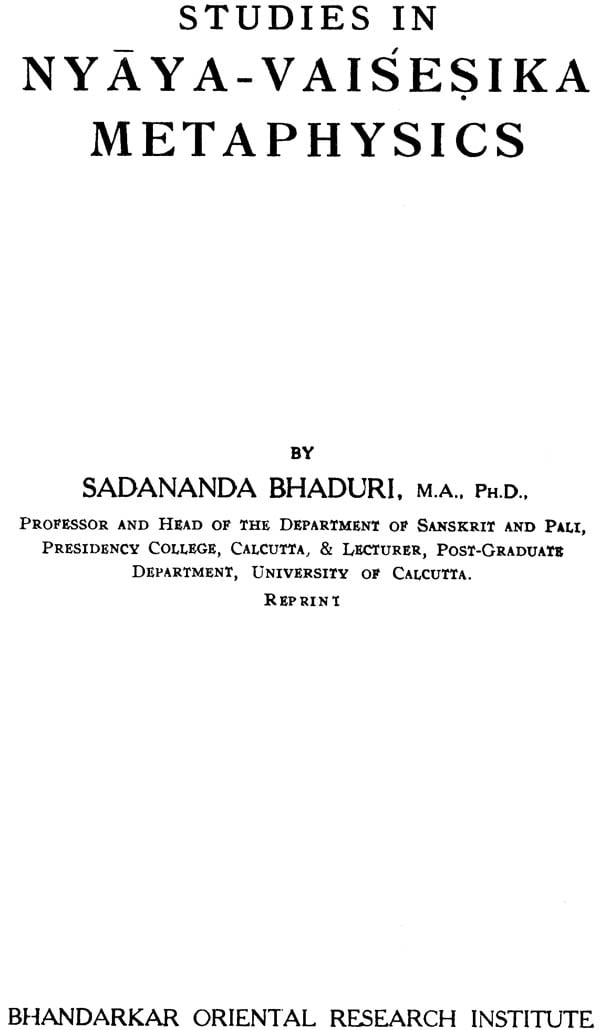
Sadananda Bhaduri, M.A., Ph.D., Professor and Head of the Department of Sanskrit and Pali, Presidency College, Calcutta, & Lecturer, Post-Graduate Department, University of Calcutta.
Though essentially a critique of knowledge, the Nyaya is also a comprehensive system of metaphysics. In the latter aspect, however, it has so completely taken over the conception of a realistic universe as elaborated in the Vaisesika, that the two schools of thought need hardly be differentiated except for a historical study of their lines of development. The present work is an attempt to give an expository and critical analysis of the solutions offered by Nyaya-Vaisesika realism for some of the fundamental problems of metaphysics.
The texts of Nyaya-Vaisesika bristle with linguistic technicalities which are not always free from obscurity. This has not infrequently hampered an adequate evaluation of the meta- physical speculations of the school. I have endeavoured in the following pages to make it possible for a modern reader to judge some of these speculations in their proper perspective and appraise them correctly. To appreciate or even to indicate the I contributions of the great writers of the school has often involved rethinking their ideas in modern terms. Every possible care has however been taken to avoid the risk of reading into these writers ideas which are foreign to them.
The scope of this work is limited mainly to the consideration of the problems relating to the physical order-its reality and substantiality, its constitution and character, its different members and the laws governing their behaviour, its relation to time and space. These problems raise a large number of important issues and cover a vast held in Nyaya-Vaisesika metaphysics. I have concluded with a chapter oh Causality, for all Nyaya-Vaisesika speculations, it will be seen, presuppose certain definite conclusions on this question.
No account of realism can be complete or valuable which does not take note of the destructive criticism of the idealists and sceptics. As is well known, the Buddhist philosophers of different schools and the Advaita-Vedantist dialecticians like Sriharsa and Citsukha have been the chief critics of the Nyaya-Vaisesika scheme of reality. I have undertaken, wherever necessary, a critical review of the arguments of these philosophers and tried to examine how far the Nyaya-Vaisesika point of view can be defended in its controversy with the opposing schools of thought.
I take this opportunity of expressing my warmest gratitude to my acarya. Late Mahamahopadhyaya Pandit Phanibhushan Tarkavagish, with whom I had the privilege of reading some of the important texts of the Nyaya-Vaisesika system. To my other teachers of Indian Philosophy, Mahamahopadhyaya Pandit Yogindra Nath Tarka-Vedantatirtha and Dr. Satkari Mookerjee, I am grateful for material help during the preparation of this work. I am also deeply indebted to Mahamahopadhyaya Pandit Gopinath Kaviraj, Late Principal, Government Sanskrit College, Benares, for many valuable suggestions and criticisms. I have the greatest pleasure in acknowledging my obligation `to Dr. B. C. Law, the great Indologist and patron of scholar- ship, but for whose generous help and active sympathy it would not have been possible to bring out this book in its present form. I am thankful to the authorities of the Bhandarkar Oriental Research Institute for giving this volume a place in the Bhandarkar Oriental Series. My hearty thanks are also due to my pupil, Mr. Makhanlal .Mookerjee, M.A., of the Ramakrishna Mission Vidyamandir, Belur, for his assistance in the correction of the proofs. Lastly, I must offer sincere thanks to Mr. P. C. Ray and Mr. K. K. Bhattacharya of the Sri Gouranga Press for the keen interest they have taken in piloting the book through the press.
| Preface | vii | |
| Chapter I | Introduction | 1 |
| 1. The Categories or Types of Real’s | 1 | |
| 2. The Criteria of Reality | 5 | |
| 3. The Definition of Being | 10 | |
| 4. Existence and its Relation to the Categories | 15 | |
| Chapter II | Substance | 22 |
| 1. Introduction | 22 | |
| 2. Objections to the Reality of Substance Analysed and Answered | 23 | |
| 3. The Definition of Substance | 36 | |
| (a) Is Substance definable? | 36 | |
| (b) Substance as a self-subsistent real | 37 | |
| (c) Substance as an entity possessing motion | 39 | |
| (d) Substance as the substratum of quality | 41 | |
| (e) Substance as the inherent cause | 45 | |
| 4. Types of Substances | 50 | |
| Chapter III | Mater and its Constitution | 52 |
| 1. The Primal Material Substances | 52 | |
| 2. The Atomic Theory | 54 | |
| 3. The Molecular Theory of Raghunatha Siromani | 66 | |
| 4. Concluding Remarks | 69 | |
| Chapter IV | The Formation of Gross Bodies | 71 |
| 1. The Intermediary Stages: Dyads and Triads | 71 | |
| 2. The Theories of Intransitive and Transitive Causation | 82 | |
| Chapter V | Qualitative Changes in Earthy Bodies | 89 |
| 1. The Problem and its Relevancy | 89 | |
| 2. The Doctrines of Pilupaka and Pitharapaka | 90 | |
| 3. Vaisesika Speculations on the Time Required for Qualitative Change | 102 | |
| 4. The Action of Heat on Earthy Atoms | 108 | |
| Chapter VI | The Properties of Matter | 110 |
| 1. The Qualities of Matter as Finite Substance | 110 | |
| 2. The Qualities of Matter as Substance | 111 | |
| 3. Some Physical Qualities of Mater | 125 | |
| 4. The Specific Qualities | 127 | |
| 5. Matter and Motion | 134 | |
| (a) The characteristics of motion | 134 | |
| (b) Types of motion | 136 | |
| (c) Motion in relation to its causes | 138 | |
| (d) Motion as an objet of perception | 140 | |
| Chapter VII | The Forms of Matter | 142 |
| 1. Atomic Matter | 142 | |
| (a) The characteristics of atoms | 142 | |
| (b) Atoms as unique particulars the category of particularity | 143 | |
| (c) The motion of atoms | 146 | |
| 2. Types of Material Composites | 147 | |
| (a) Organisms | 147 | |
| (b) Senses | 152 | |
| (c) Some views regarding the tactile sense examined | 157 | |
| (d) Objects | 161 | |
| Chapter VIII | Akasa | 163 |
| 1. Some Views Examined | 163 | |
| 2. Akasa and Sound | 165 | |
| 3. The Attributes of Akasa | 172 | |
| 4. The Nature of Sound | 175 | |
| Chapter IX | Time | 183 |
| 1. The Proof of Time: The Nyaya-Vaisesika View | 183 | |
| 2. Is Perception of Time Possible? | 193 | |
| 3. The Reality of Time and its Determinations | 197 | |
| 4. The Atomic View of Time | 203 | |
| 5. The Nature and Status of the Present | 206 | |
| Chapter X | Space | 214 |
| 1. The Nature and Prof of Space | 214 | |
| 2. Some Characteristics of Priority and Posteriority | 221 | |
| 3. Some Attributes of Space | 225 | |
| Chapter XI | Whole and Part | 229 |
| 1. The Whole as Distinct from its Parts the Psychological Defence | 229 | |
| 2. The Whole as Distinct from its Parts: the Ontological Defence | 241 | |
| 3. Objections of the Buddhist Nihilist Examined | 248 | |
| 4. The Position of the Buddhist Realist Examined | 251 | |
| 5. Antinomies Examined | 260 | |
| Chapter XII | Causality | 271 |
| 1. Causality as a Universal and Necessary Principle | 271 | |
| 2. The Definition of Cause | 281 | |
| 3. The Determinants of Causal Relation | 287 | |
| 4. Classification of Causes | 293 | |
| 5. The Problem of Plurality of Causes | 299 | |
| 6. The Relation of the Effect to the Cause | 306 | |
| 7. The Reality of the Cause | 313 | |
| General Index | 321 | |
| Sanskrit Index | 328 |
